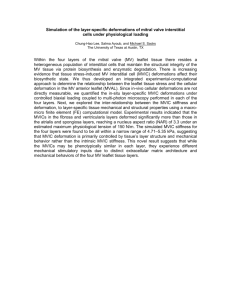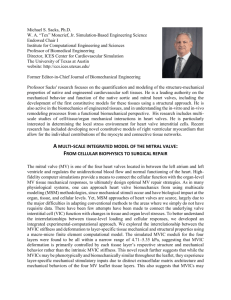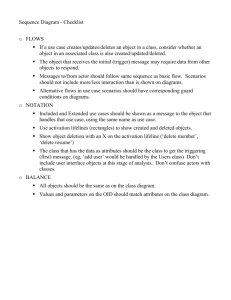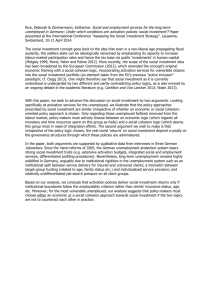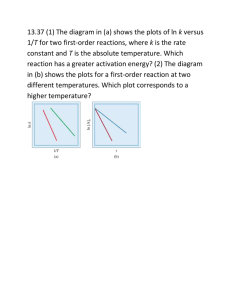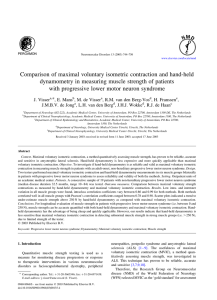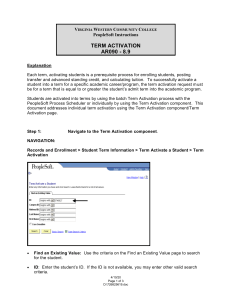Comparison of Muscle Activation Levels during Arm Abduction in the
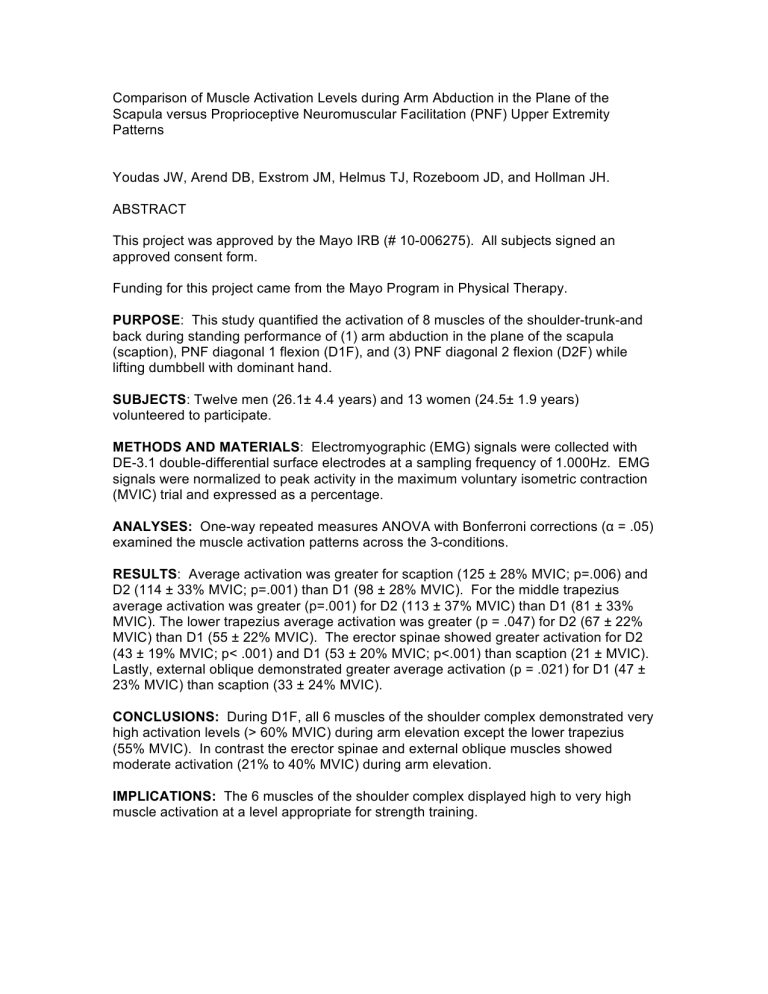
Comparison of Muscle Activation Levels during Arm Abduction in the Plane of the
Scapula versus Proprioceptive Neuromuscular Facilitation (PNF) Upper Extremity
Patterns
Youdas JW, Arend DB, Exstrom JM, Helmus TJ, Rozeboom JD, and Hollman JH.
ABSTRACT
This project was approved by the Mayo IRB (# 10-006275). All subjects signed an approved consent form.
Funding for this project came from the Mayo Program in Physical Therapy.
PURPOSE : This study quantified the activation of 8 muscles of the shoulder-trunk-and back during standing performance of (1) arm abduction in the plane of the scapula
(scaption), PNF diagonal 1 flexion (D1F), and (3) PNF diagonal 2 flexion (D2F) while lifting dumbbell with dominant hand.
SUBJECTS : Twelve men (26.1± 4.4 years) and 13 women (24.5± 1.9 years) volunteered to participate.
METHODS AND MATERIALS : Electromyographic (EMG) signals were collected with
DE-3.1 double-differential surface electrodes at a sampling frequency of 1.000Hz. EMG signals were normalized to peak activity in the maximum voluntary isometric contraction
(MVIC) trial and expressed as a percentage.
ANALYSES: One-way repeated measures ANOVA with Bonferroni corrections ( α = .05) examined the muscle activation patterns across the 3-conditions.
RESULTS : Average activation was greater for scaption (125 ± 28% MVIC; p=.006) and
D2 (114 ± 33% MVIC; p=.001) than D1 (98 ± 28% MVIC). For the middle trapezius average activation was greater (p=.001) for D2 (113 ± 37% MVIC) than D1 (81 ± 33%
MVIC). The lower trapezius average activation was greater (p = .047) for D2 (67 ± 22%
MVIC) than D1 (55 ± 22% MVIC). The erector spinae showed greater activation for D2
(43 ± 19% MVIC; p< .001) and D1 (53 ± 20% MVIC; p<.001) than scaption (21 ± MVIC).
Lastly, external oblique demonstrated greater average activation (p = .021) for D1 (47 ±
23% MVIC) than scaption (33 ± 24% MVIC).
CONCLUSIONS: During D1F, all 6 muscles of the shoulder complex demonstrated very high activation levels (> 60% MVIC) during arm elevation except the lower trapezius
(55% MVIC). In contrast the erector spinae and external oblique muscles showed moderate activation (21% to 40% MVIC) during arm elevation.
IMPLICATIONS: The 6 muscles of the shoulder complex displayed high to very high muscle activation at a level appropriate for strength training.
